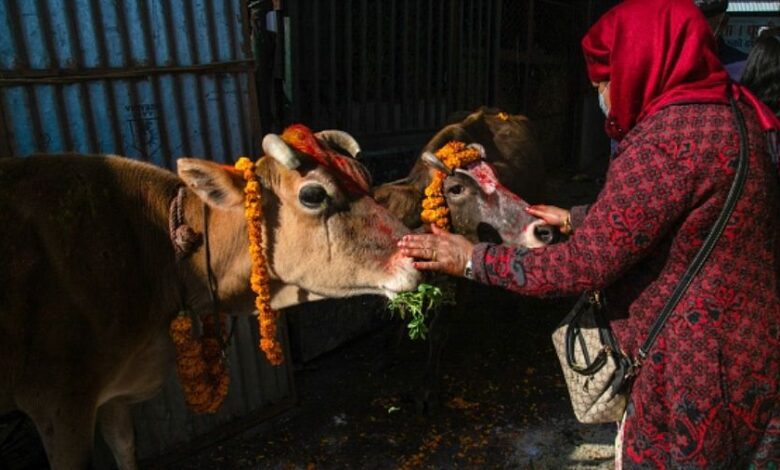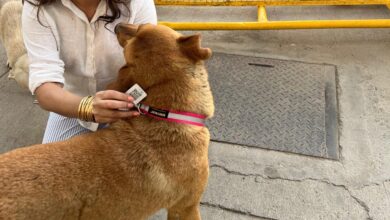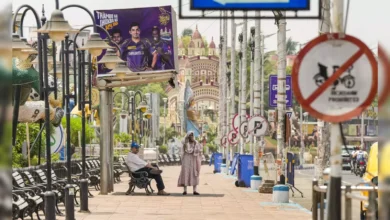Is cattle life more quality than senior citizens, widows and other depressed classes of Uttar Pradesh?
"The minimum food cost per cattle per day was working out to be 62 and district magistrates at their level were arranging the cost over and above 30 from different sources, including funds available to local bodies under various heads," said JP Pandey, additional director (godhan), explaining the increase. "Besides, fodder is collected from willing individuals, NGOs, etc. by way of donation," he added.

Anecdotes do not adequately convey the magnitude of the stray cattle problem in Uttar Pradesh. Poor and elderly persons over 60 years old were given a pension of $1,000 per month under the state’s 2022–23 budget; 5.49 million people received this pension in 2022–23. They received payments totalling 6,069 crores.
Similar to this, the budget provided poor women with a stipend of $1,000 per month through the widow pension system, which had 2.721 million beneficiaries and distributed $3,299 crore the same year. According to a government news release dated September 9, Chief Minister Yogi Adityanath approved a rise in the daily cost of feeding cattle from the current $30 to $50 per animal, or $1,500 per month.
Nearly 1.37 million stray cattle are being housed in 6,889 cow protection centers and other locations in the state, according to representatives of the animal husbandry department of the state. 1.19 million of them are housed in cow protection facilities, while another 185,000 are being looked for by private citizens as part of the Mukhya Mantri Sahabhagita Yojana. At 50 per day, this amounts to an annual expenditure of more than 2,500 crores on cow feed.
Most farmers just release these animals to avoid caring for them because Uttar Pradesh has strictly enforced laws against killing cows that are past their prime as well as oxen and bulls. As a result, there are now much more wandering cattle, much to the chagrin of other farmers, who frequently wander onto agricultural areas. More cow protection centers have been established by the state as a response to this growing issue.
“The minimum food cost per cattle per day was working out to be 62 and district magistrates at their level were arranging the cost over and above 30 from different sources, including funds available to local bodies under various heads,” said JP Pandey, additional director (godhan), explaining the increase. “Besides, fodder is collected from willing individuals, NGOs, etc. by way of donation,” he added.
It should be noted that this sum does not cover the price of operating cow protection centers or the wages of caregivers. The state is also investing in 250 new, sizable cow protection centers, each of which can house 5,000–10,000 animals.
According to Rajnish Dubey, additional chief secretary for animal husbandry, caregivers are currently paid at a rate of 210 rupees per day under the Mahatma Gandhi National Rural Employment Guarantee Scheme (MGNREGS), but the state government has decided to pay them a monthly salary of 7,000 rupees in eastern UP and 7,500 rupees in western UP.
State government is committed to safeguarding stray cattle
Although it is commendable that the state government is committed to safeguarding stray cattle, concerns are frequently expressed about how the money is being used.
“The problem of stray cattle continues to plague the state despite significant financial investments and government’s committed efforts over the past five years,” said an official from the animal husbandry department who asked to remain anonymous.
“More than two lakh (200,000) stray cattle are still believed to be roaming free with complaints about their destroying farmers’ crops, disrupting traffic on roads, and even attacking people, sometimes to death, being received from many districts,” he continued.
The latest state government support was announced in December of 2021 by the Uttar Pradesh CM Yogi Adityanath. They are as follows:
- Prior to the Yogi Adityanath administration taking office, widowed women received an honorarium of 300, which was later increased to 500. He highlighted that 30,34 lakh poor women will now be eligible for a $1,000 pension.
- Adityanath stated that many households were previously excluded from this program when he announced an increase in the old-age pension from 500 to 1,000. “This scheme was benefiting about 37 lakh people before 2017, and now that number has increased to 55.77 lakh,” CM said.
- The allowance for eight lakh persons with disabilities has been raised from 500 to 1,000. For the following four months, laborers will get a maintenance allowance of 500 a month.
- The honorarium of Anganwadi and Asha workers will also be hiked, the chief minister announced and lauded them for a commendable job at the time of COVID-19 pandemic.
- Leprosy patients would receive a 3,000 rupee allowance in addition to higher pensions. Their family will also receive housing under the prime minister’s or chief minister’s Awas Yojana.
- The government also agreed to grant women an extra sum of 5 lakh after using the funds allocated under the Ayushman Bharat plan for the treatment of women’s incurable ailments.
Please, also have a look into : What is Uttar Pradesh’s Grand Vision for 2036 Olympic Games?



